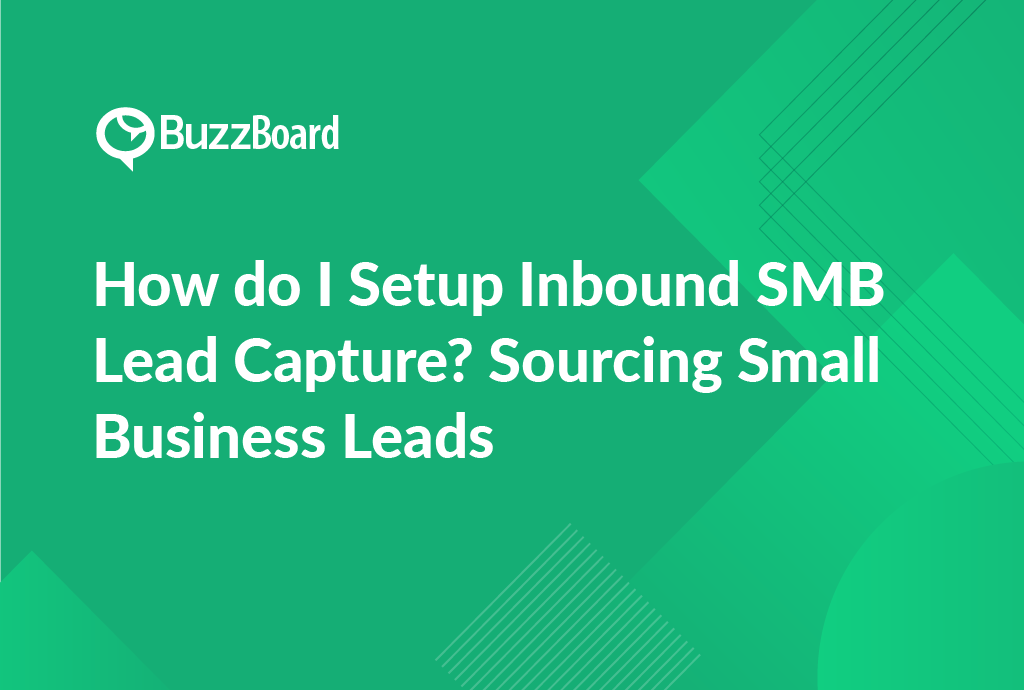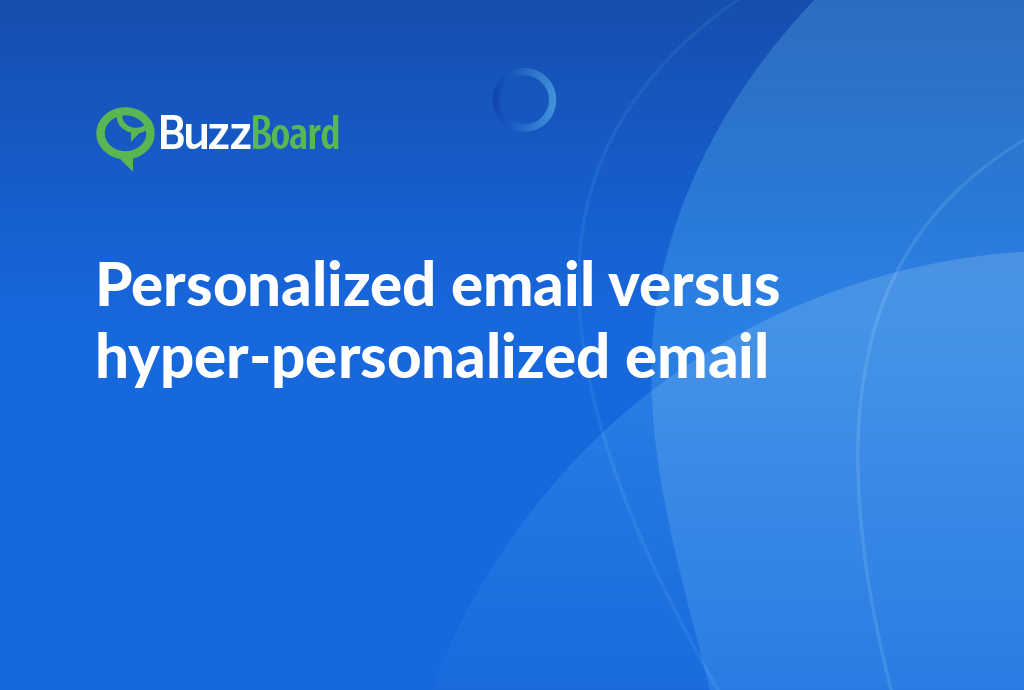How to Set Up Inbound Lead Capture for Small Business Leads
Setting up inbound lead capture is a crucial step in generating high-quality leads for your small business. To get started, identify your target audience and create a lead magnet that resonates with them. Next, set up a landing page with a clear and compelling headline, and use a lead capture form to collect contact information. Make sure to optimize your page for mobile devices and use a clear and concise call-to-action (CTA). Finally, integrate your landing page with your CRM or email marketing tool to track and nurture your leads.
The Concept of Inbound SMB Lead Capture
Inbound SMB Lead Capture is a tactical approach that secures potential clients in the small business sector. As fundamental stakeholders of digital marketing agencies, understanding this concept allows for effective prospecting for small business clients.
Capturing leads from small businesses necessitates comprehending their distinctive needs and obstacles. Small businesses often lack the extensive resources of larger companies, thus they depend more on digital marketing strategies to bolster visibility and drive customer engagement.
Inbound SMB lead capture is a crucial concept in digital marketing that can be likened to a fishing expedition. Imagine an agency acting as the angler, casting a wide net into the vast ocean of potential small business customers. This net is comprised of strategic digital marketing strategies tailored specifically for the small business market, designed to attract and engage the target audience.
The bait, in this analogy, is high-quality content that resonates with the small business community. This content is carefully crafted to address the unique pain points and interests of the target audience, making it irresistible to the “fish” (small business clients). As the fish swim closer to investigate the bait, they become entangled in the net, symbolizing the contact made with the sales team.
The resulting steady flow of inbound leads is a direct reflection of the agency’s success in capturing the attention and interest of potential clients. This is where the concept of Inbound SMB Lead Capture comes into play. It’s a key performance indicator (KPI) that measures the effectiveness of digital marketing sales strategies in attracting, engaging, and satisfying small business clients.
In today’s digital landscape, the spectrum of digital marketing sales strategies is vast and diverse. It encompasses a range of tactics, including SEO, content marketing, social media, email campaigns, and more. However, Inbound SMB Lead Capture is the ultimate metric that quantifies the success of these efforts.
To maximize the effectiveness of Inbound SMB Lead Capture, agencies must focus on escalating their efforts, optimizing their resources, and streamlining their sales processes. This involves:
- Developing a deep understanding of the small business market, including their pain points, interests, and buying behaviors.
- Creating high-quality, relevant, and engaging content that resonates with the target audience.
- Leveraging multiple digital marketing channels to reach and attract potential clients.
- Building a strong sales team that can effectively engage with and convert leads into paying customers.
- Continuously monitoring and optimizing the performance of digital marketing campaigns to ensure maximum ROI.
By adopting a data-driven approach to Inbound SMB Lead Capture, agencies can refine their strategies, improve their results, and ultimately drive business growth.
The Role of a Digital Marketing Agency in Setting up an Inbound SMB Lead Capture
Digital marketing agencies play a crucial role in helping small and medium-sized businesses (SMBs) establish a successful inbound lead capture strategy, which is essential for generating growth opportunities and driving business success. A well-planned and executed lead capture strategy can help SMBs attract and convert potential customers into loyal clients, ultimately leading to increased revenue and profitability.
To achieve this, digital marketing agencies offer a range of services that cater to the unique needs of SMBs. These services include content creation, SEO optimization, social media marketing, email marketing, and comprehensive inbound marketing strategies. By leveraging these services, SMBs can effectively engage with their target audience, build brand awareness, and drive website traffic and conversions.
However, prospecting for SMB clients requires more than just applying digital marketing tactics. It requires a deep understanding of the industry landscape, business objectives, and target audience. Digital marketing agencies utilize their expertise to develop customized marketing campaigns that are tailored to the specific needs and goals of each SMB client. These campaigns are designed to resonate with the target audience, leave a lasting impression, and drive meaningful results.
Selling to SMBs with limited resources presents unique challenges, but also affords substantial rewards for digital marketing agencies that are able to develop effective strategies and tactics. By utilizing digital marketing sales skills, agencies can effectively promote their services, generate leads, and drive conversions. Salespeople who stay updated with the latest digital marketing trends and best practices have a significant edge when selling to SMBs.
To succeed in selling to SMBs, digital marketing agencies must be able to demonstrate a deep understanding of the SMB’s business goals, challenges, and target audience. They must also be able to communicate the value of their services in a clear and concise manner, and provide measurable results and ROI. By building strong relationships with SMB clients and delivering exceptional results, digital marketing agencies can establish themselves as trusted partners and drive long-term growth and success for their clients.
In addition, digital marketing agencies can also leverage their expertise to help SMBs develop a comprehensive digital marketing strategy that aligns with their business goals and objectives. This may include developing a content marketing strategy, creating a social media marketing plan, or implementing a search engine optimization (SEO) strategy. By providing a range of services and solutions, digital marketing agencies can help SMBs achieve their marketing goals and drive business success.
Digital marketing agencies play a vital role in helping SMBs establish a successful inbound lead capture strategy and drive business growth. By offering a range of services, developing customized marketing campaigns, and leveraging digital marketing sales skills, agencies can help SMBs attract and convert potential customers into loyal clients. By staying updated with the latest digital marketing trends and best practices, salespeople can effectively promote their services, generate leads, and drive conversions. Ultimately, digital marketing agencies that are able to deliver exceptional results and build strong relationships with SMB clients can establish themselves as trusted partners and drive long-term growth and success for their clients.
Key Strategies for Prospecting for Small Business Client Leads
Prospecting for small business client leads requires a strategic approach that leverages the power of digital marketing to capture and convert potential clients. In today’s digital landscape, effective inbound SMB lead capture is the key to unlocking a steady stream of qualified leads. So, how can you efficiently tap into small business leads and turn them into loyal clients?
A vital prospecting strategy is to understand the digital marketing needs of small businesses. Conducting an in-depth needs analysis and grasping their unique pain points allows a digital marketing agency to create a sales pitch that truly resonates with potential clients. This involves identifying the specific challenges they face, such as limited resources, lack of expertise, or difficulty measuring ROI, and tailoring your approach to address these concerns.
However, simply understanding the client’s needs doesn’t guarantee leads. Successful inbound SMB lead capture requires offering value to the potential client early on. This can be achieved by providing expert guidance, sharing insightful case studies, following industry trends, or giving away free tools or resources. By presenting value upfront, small businesses are more likely to interact with your agency, engage with your content, and ultimately become leads.
Another crucial aspect of inbound SMB lead capture is boosting your agency’s online visibility through search engine optimization (SEO) and content marketing strategies. Creating high-quality, SEO-optimized content that addresses the challenges faced by small businesses can draw them to your agency. This content should be informative, engaging, and relevant to their needs, providing valuable insights and solutions to their problems.
Paid digital marketing tactics, such as pay-per-click (PPC) advertising, can also be utilized to target potential clients in specific industries or regions. By targeting specific keywords and demographics, you can ensure that your message reaches the right audience and drives conversions.
In addition to these strategies, it’s essential to have a well-organized sales process in place to convert leads into clients. This involves having a clear understanding of your agency’s unique value proposition, being able to articulate the benefits of your services, and having a structured approach to sales conversations.
Prospecting for small business clients can be challenging, but with organized strategies, your digital marketing sales team can not only attract leads but also sell to small businesses. By understanding their needs, offering value, and boosting your online visibility, you can establish your agency as a trusted authority in the industry and attract a steady stream of qualified leads.
To take your prospecting efforts to the next level, consider the following best practices:
- Develop a comprehensive understanding of your target audience, including their pain points, goals, and behaviors.
- Create a content marketing strategy that addresses the specific needs and challenges of small businesses in your target industry.
- Utilize SEO and PPC advertising to increase your online visibility and drive targeted traffic to your website.
- Offer valuable resources, such as eBooks, webinars, or free consultations, to educate and engage potential clients.
- Develop a structured sales process that includes clear communication, personalized messaging, and a clear call-to-action.
- Continuously monitor and optimize your prospecting efforts to ensure maximum ROI and lead generation.
By implementing these strategies and best practices, you can efficiently tap into small business leads and turn them into loyal clients. Remember, prospecting for small business clients requires a strategic approach that leverages the power of digital marketing to capture and convert potential clients. With the right strategies and tactics in place, you can establish your agency as a trusted authority in the industry and drive growth and revenue through inbound SMB lead capture.
Best Practices for Capturing and Selling to Small Business Leads
Capturing leads from small businesses presents a unique set of challenges that require tailored strategies to effectively convert them into clients. The key to successful inbound SMB lead capture lies in understanding the needs and pain points of your target audience and crafting personalized approaches that resonate with them. Digital marketing agencies that excel in capturing and converting these leads into clients have mastered the art of understanding their audience, leveraging technology, and emphasizing value.
To begin, comprehensive market research is essential to gain a deep understanding of the small business market. This involves identifying the needs, pain points, and goals of small business owners and decision-makers. By doing so, you can position your services to meet these needs, differentiate yourself from competitors, and create a compelling value proposition. This research should also help you identify the most effective channels and tactics to reach your target audience.
Once you have a solid understanding of your target audience, it’s time to leverage technology to improve your prospecting efforts. Digital marketing sales teams can use a range of digital channels to reach small business clients, including search engine optimization (SEO), email marketing, social media marketing, and content marketing. A well-planned and executed digital strategy can significantly enhance your lead-capturing effectiveness by allowing you to target specific audiences, personalize your messaging, and measure the success of your campaigns.
In addition to leveraging technology, it’s essential to emphasize value when selling to small business audiences. Given their limited resources, small businesses are more likely to invest in solutions that offer a clear and tangible return on investment (ROI). As a result, salespeople at digital marketing agencies must be able to demonstrate the value of their services and provide concrete examples of how they can help small businesses achieve their goals.
To capture and sell to small business leads effectively, digital marketing agencies should focus on the following best practices:
- Conduct comprehensive market research to understand the needs and pain points of small business owners and decision-makers.
- Leverage technology to improve your prospecting efforts, including SEO, email marketing, social media marketing, and content marketing.
- Emphasize value when selling to small business audiences, providing clear and tangible examples of how your services can help them achieve their goals.
- Use personalized approaches to resonate with small business owners and decision-makers, highlighting how your services can help them overcome specific challenges and achieve their objectives.
- Measure the success of your campaigns and adjust your strategies accordingly, using data and analytics to inform your decisions.
- Build relationships with small business owners and decision-makers, providing ongoing support and guidance to help them achieve their goals.
- Stay up-to-date with the latest industry trends and best practices, ensuring that your services remain relevant and effective in the ever-changing digital landscape.
By following these best practices, salespeople at digital marketing agencies can significantly improve their inbound SMB lead capture and sales process, converting more leads into clients and driving business growth.
The Benefits and Challenges of Implementing Inbound SMB Lead Capture in Digital Marketing Sales
Implementing an inbound small and medium-sized business (SMB) lead capture mechanism in digital marketing sales is a crucial strategy that offers a multitude of benefits and presents its own set of challenges. Effectively capturing leads from SMBs can significantly fuel your pipeline, making your agency more resilient and competitive in the ever-evolving digital marketing landscape.
To succeed in capturing SMB leads, digital marketing agencies must adopt a navigational approach, serving as beacons that guide prospects through a clear and seamless journey to their destination. By leveraging inbound SMB lead capture strategies, agencies can transform anonymous prospects into identifiable targets, gaining valuable insights into their needs, preferences, and pain points. This enables negotiations to be more focused, streamlined, and effective, ultimately driving conversions and revenue growth.
However, prospecting for small business clients can be a daunting task. SMBs typically have a limited customer base, and their marketing budgets are often constrained. They may be more inclined to rely on traditional advertising methods, making it essential for digital marketing agencies to develop persuasive strategies that demonstrate the value and ROI of digital marketing. Moreover, SMBs often struggle with budget constraints and concerns about the return on investment (ROI) that digital marketing offers, making it crucial for agencies to address these concerns and provide tailored solutions.
To overcome these challenges, it is essential to identify and understand the unique needs and challenges of SMBs. This requires a deep understanding of their customer journey, including their pain points, goals, and motivations. By developing targeted content that resonates with SMBs and addresses their specific needs, agencies can establish trust, build relationships, and ultimately drive conversions.
Implementing effective inbound SMB lead capture strategies demands considerable effort, time, and skill. It requires a thorough understanding of the SMB market, as well as the ability to develop and execute targeted marketing campaigns that resonate with this audience. Agencies must also be prepared to adapt to the ever-changing needs and preferences of SMBs, staying ahead of the competition by continuously refining their strategies and tactics.
Despite the challenges, the rewards of capturing SMB leads can be substantial. By leveraging inbound SMB lead capture strategies, agencies can significantly boost their bottom line, drive revenue growth, and establish themselves as trusted partners for SMBs. To achieve this, agencies must be willing to invest time and resources in understanding the unique needs and challenges of SMBs, developing targeted content that resonates with this audience, and executing effective marketing campaigns that drive conversions.
Capturing SMB leads is a critical component of digital marketing sales, offering a range of benefits and presenting its own set of challenges. By understanding the unique needs and challenges of SMBs, developing targeted content that resonates with this audience, and executing effective marketing campaigns, digital marketing agencies can establish themselves as trusted partners for SMBs, drive revenue growth, and boost their bottom line.
Conclusion
Setting up inbound lead capture is a powerful way to generate high-quality leads for your small business. By identifying your target audience, creating a lead magnet that resonates with them, and setting up a landing page with a clear and compelling headline, you can attract and capture leads that are more likely to convert into customers. Remember to optimize your page for mobile devices, use a clear and concise call-to-action, and integrate your landing page with your CRM or email marketing tool to track and nurture your leads.
By following the steps outlined in this article, you can create a lead capture system that drives real results for your small business. Whether you’re just starting out or looking to improve your existing lead generation strategy, inbound lead capture is a powerful tool that can help you achieve your business goals. So why wait? Start setting up your inbound lead capture system today and start generating the leads you need to grow your business.









